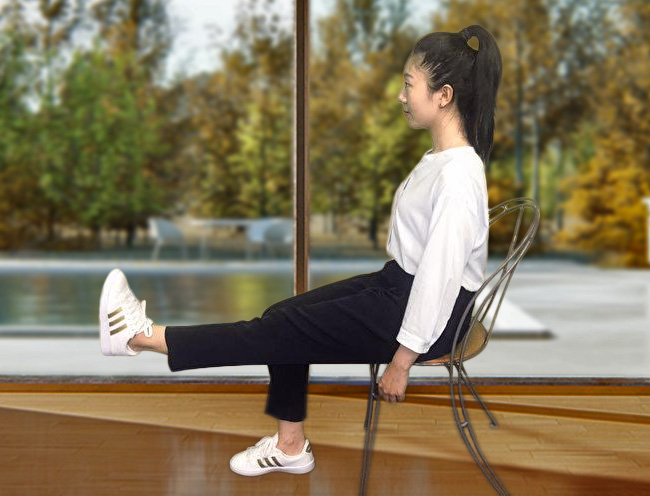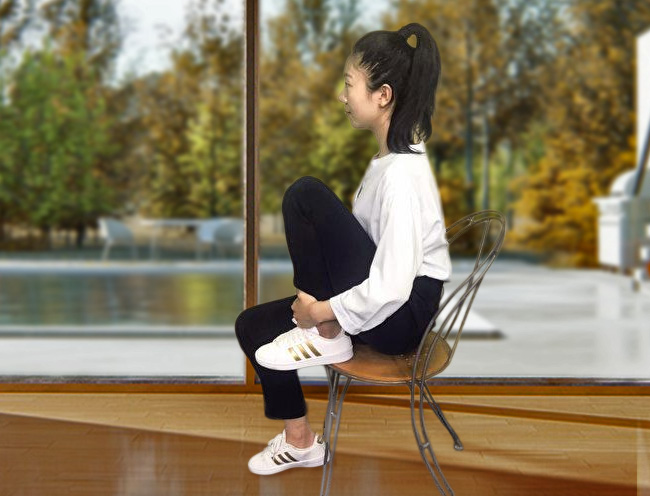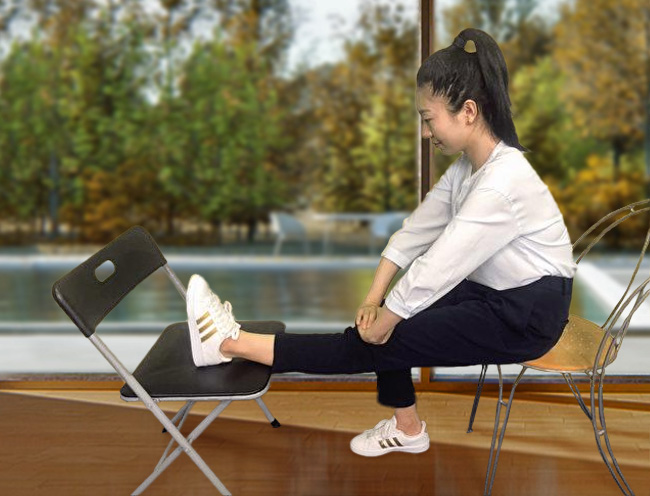Simple Exercises to Prevent Knee Joint Pain and Post-40 Knee Degeneration
In daily life, almost everyone has experienced knee joint pain. However, some people have pain that worsens and even becomes so severe that walking becomes difficult.
Knee joint pain can be roughly divided into the following stages based on a patient’s age:
- Gestation period: between zero and 20 years old
- Preclinical period: between 20 and 40 years old
- Clinical period: between 40 and 60 years old
- Disability period: between 60 and 80 years old
In other words, anywhere after 40, knee joint pain is prone to occur.
Generally, the most common source of pain is the “medial crease” on the inner side of the knee joint. Friction on the medial side of the knee joint can cause physical damage (chondrocyte, interstitial destruction) or chemical corrosion from inflammation of a synovial membrane, and the cartilage fragments produced by these injuries can cause third-degree friction and serious pain.
From an anatomical point of view, the medial crease of the knee joint is a joint capsule made of soft tissue. The crease will become inflamed and swollen under repeated friction and compression (this can happen up to 1 million times a year). In addition, the chemical enzymes released by this inflamed tissue will corrode the surrounding cartilage, resulting in knee joint degeneration, which could be more destructive than the original physical damage.
Key Reasons for Knee Degeneration and Pain
Clinical observation shows that many patients with knee joint degeneration and pain often have leg length discrepancy (one leg longer than the other), which causes uneven force exerted on the legs and knees while walking. After further inspection, most of these patients are found to have an issue of too-tight tendons in the knee-popliteal fossa (Weizhong acupoint), and even a large tendon knot formed in the knee-popliteal fossa, forming a cyst that seriously affects walking.
Because the tendons in the knee-popliteal fossa are too tight, the space to maneuver between the cartilages of the entire knee joint gets smaller, and the pressure increases. Long-term friction and inflammation tense the knee joint’s inner and outer tendons and accelerate knee degeneration, resulting in a vicious cycle. Therefore, when treating knee joint pain, properly adjusting the length of the legs (likely with the help of orthotic shoes) and relaxing the tendons in the knee-popliteal fossa will significantly improve the condition.
Unfavorable Knee Movements
From a practical point of view, all excessive and repeated knee-bending actions are bad for the knee joint and should be avoided as much as possible. For example:
- The knee joint is bent suddenly or bent at 90 degrees for a long time.
- Repeated bending and straightening of the knee joint (such as riding a bicycle).
- Repetitive squatting and kneeling.
- Going up and down stairs or hiking.
In addition, improper sitting and standing postures will also impact the knee joint. For example, when sitting with feet crossed, the body leaning sideways or standing on one side will cause pelvic skew, scoliosis, and leg length discrepancy. When the legs become unequal, muscle tension in both legs is uneven (especially the bladder meridian at the back), and the tighter leg is likely to feel more significant stress and more pain in the knee joint. Therefore, one should always have a proper sitting and standing posture. This is an essential yet straightforward secret to maintaining health.
When sitting down or standing up, put your palms on your knees and sit down or stand up slowly. This action can reduce the pressure on the knee joint and reduce damage.
3 Simple Exercises to Keep Healthy Knee Joints, Slow Degeneration
When you feel pain, jamming, or hear a friction noise on the inside of the knee joint, it may mean it is time to take better care of the knee. Here are three simple exercises that can help prevent degenerative knee pain.
1. Strengthen the Quadriceps Muscles

Strengthening the quadriceps muscles will help stabilize the knee joints. Straighten one foot with the toes turned upward in a sitting posture so thigh muscles become tense. Hold this posture for 10 seconds, then lower the calf slowly.
Do 10 to 20 times for each foot. The best time to do this exercise is when you wake up, and your feet are more flexible.
2. Knee Hug

Hold the far end of one calf close to the ankle in a sitting position with both hands. Let the calf retract as far as possible toward the buttocks, then bend the knee joint to the maximum angle for 30 seconds.
After that, straighten the legs and gently bend and stretch the legs five times.
Repeat the above steps five times.
3. Knee Press

In a sitting position, straighten one leg so the heel and the far end of the calf are leaning against another chair. Press down on the knee with both hands from top to bottom for 30 seconds. Be careful not to shake or vibrate the joint.
Put the legs down, and then gently stretch them five times.
Repeat the above steps five times.
Long-term inflammation and pain will make the knee joint tenser and tenser. The knee hug exercise pulls the tendons in front of the knee joint while the knee press pulls them behind it. These two exercises will relax the tight knee joint, reduce pressure between the knee cartilages, and make the joint more flexible.
Take Note
- Usually, the more painful the knee joint is, the less desirable it is to move, and the condition will only worsen. When the knee joint is in pain, doing the above three exercises can slowly relieve the condition.
- Do the above exercises once in the morning, at noon, and at night.
What causes knee pain?
Temporary knee pain is different from chronic knee pain. Many people experience temporary knee pain as a result of an injury or accident.Physical conditions or diseases can cause knee pain. These include:
- osteoarthritis: pain, inflammation, and joint destruction caused by degeneration and deterioration of the joint
- tendinitis: pain in the front of the knee that is made worse when climbing, taking stairs, or walking up an incline
- bursitis: inflammation caused by repeated overuse or injury of the knee
- chondromalacia patella: damaged cartilage under the knee cap
- gout: arthritis caused by the buildup of uric acid
- Baker’s cyst: a buildup of synovial fluid (fluid that lubricates the joint) behind the knee
- rheumatoid arthritis (RA): a chronic autoimmune inflammatory disorder that causes painful swelling and can eventually cause joint deformity and bone erosion
- dislocation: dislocation of the kneecap most often the result of trauma
- meniscus tear: a rupture in one or more of the cartilage in the knee
- torn ligament: tear in one of the four ligaments in the knee — the most commonly injured ligament is the anterior cruciate ligament (ACL)
- bone tumors: osteosarcoma (second most prevalent bone cancer), most commonly occurs in the knee
Related: 9 Best Ways to Treat Knee Pain in 2023







Comments
Post a Comment